Taylor v Gutierrez
Wembley Arena, London, November 14th
Her smile stood out. Miriam Gutierrez’s face had received ferocious blows for the entire bout but, when it was all over, and Katie Taylor’s world superiority was confirmed as the undisputed world lightweight title, the Spaniard - her hair in tight plaits and her right eye closing in on itself - sought to assist the champion by holding a couple of her belts so that the photographers’ could capture the moment for history.
“People keep mentioning legacy, it’s all about legacy. I want to make history in this sport and inspire the next generation of fighters,” said Taylor, who’d extended her unbeaten professional record to 17 in accumulating every world title belt available.
On that November night in London, Gutierrez provided a helping hand in holding the load. Although Taylor’s black gloves had repeatedly found a way through the white gloves of Gutierrez, more often than not held up in defensive mode, with the judges scoring the bout 100-89, 100-90 and 99-91 in favour of the Irishwoman, the Spaniard’s post-bout look was not of someone vanquished in defeat but of someone who had won her own battle.
Gutierrez’s journey to standing in the middle of the ring with a boxing legend, and with a look of admiration towards her conqueror, was far from straightforward: when eight months pregnant with her daughter Zaira, the then 21-year-old Gutierrez was the victim of domestic violence would become a high-profile advocate against gender-abuse.
Boxing became her salvation. Now 37, and with a son Joaquin from a new relationship, Gutierrez - “known as ‘La Reina’, or The Queen - explained: “Boxing changed my life tremendously, as a person, in how to face things, because boxing has many similarities with my life. In the end, there will always be a blow that can hurt you but you are there to get up and fight. In boxing, you don’t always win, the question is how to deal with it.”
As a loser that night, Gutierrez was also a winner. Her smile told us that, as she looked too with adoration towards Taylor. Something to tell her children, of how she had shared the same ring with the iconic Taylor.
Ireland 24 Wales 14
Six Nations Aviva Stadium, Dublin February 8th
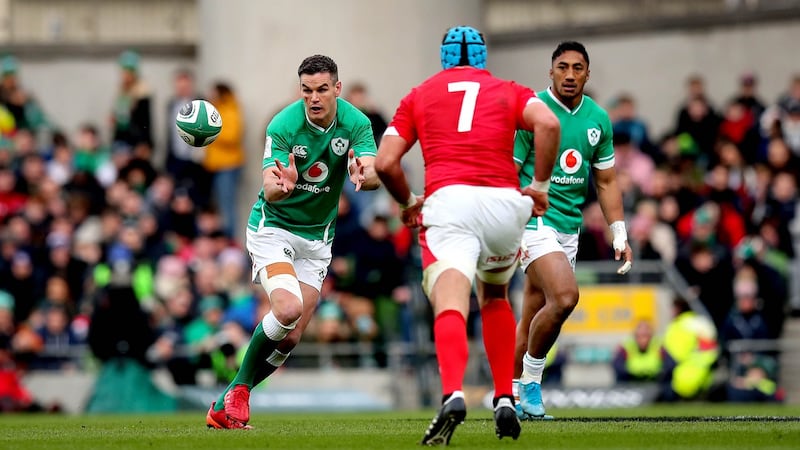
Back when the world seemed normal, a packed Aviva Stadium - with 51,000 actual people jam-packed inside and able to actually sing the Fields of Athenry with some gusto - had reason for hope for the weeks and months that lay ahead.
Ireland, with Jonny Sexton conducting the on-field orchestra and delivering yet another of those bone-bruising performances expected of his aging body, were too strong and too good for a Welsh team who'd won the Grand Slam in 2019 and the vibes around Lansdowne and the hostelries of D4 pre- and post-match were only good. Who knew, eh?
Still, the joy of the day - as Andy Farrell’s reign as manager took assured steps forward - was one that had the 51,000 attendance roaring and singing and mostly shaking their heads in wonderment at the performance of Sexton, who did his outhalf duties with a brilliance often taken for granted but also threw his lot into the physical battle as much as any forward.
It provided something of a cure for the post-World Cup hangover for the Irish, over a team who’d won the Grand Slam and reached the semi-finals of the World Cup. Not only was it a win, but a bonus point win at that.
There was so much to like about the Irish performance with an ambition to go wide and offload (in the first 10 minutes, Ireland made 35 passes to Wales's five) and the reward for their efforts was to end Wales's eight-match winning streak in the championship and to claim four tries in the process: Jordan Larmour, Tadhg Furlong, Josh Van der Flier and Andrew Conway.
Sexton it was who epitomised his own team's cussedness on the day. In just his second match into his international captaincy, Sexton led by example and, apart from his actual play, took on the role of courtroom prosecutor in arguing his point with referee Romain Poite, frequently demanding clarification about maul laws and their interpretation.
National Athletics Championships
Morton Stadium, Santry, August 23rd
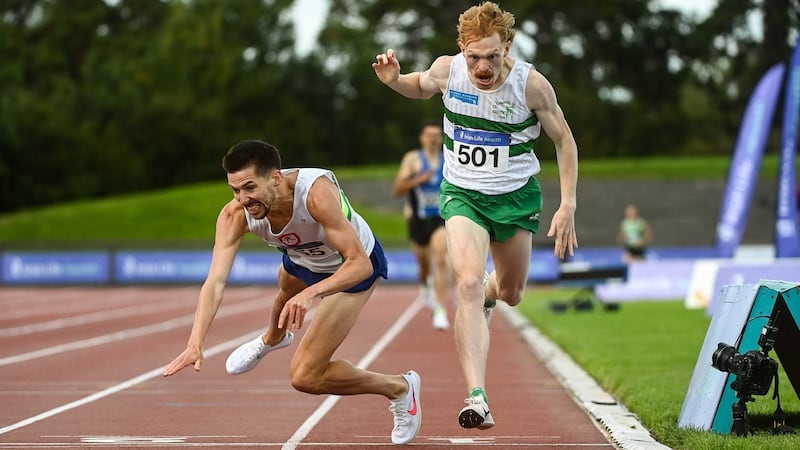
Think thin lines and all of that, you couldn’t beat what unfolded in the men’s 1,500 metres final of the National Track and Field championships. Lung-busting, jelly-kneed rawness; pure and honest endeavour . . . the epitome of why athletes survive on the adrenalin rush of it all.
Two men, one named Paul; the other named Seán.
Put them out on a track to follow in the footsteps of Herb Elliott, Ronnie Delany, Kip Keino and more and ask them to conjure up a performance for the ages.
If the pity was that there were no spectators there to watch, the saving grace was that a wider audience was allowed to suck in the raw beauty of their titanic duel on YouTube channels that made their race on a windy Sunday afternoon at Santry a global viral hit.
Seán Tobin and Paul Robinson made the race their own.
First, Tobin: he set off like there would be no tomorrow, defying the blustery conditions that swirled around the bowl to the point that he built up a 40 metre lead by the mid-race mark.
Then, Robinson: competing in the national championships for the first time in six injury-ravaged years, the Kildare runner slowly but surely reeled in the front-runner to the point where the two were neck-and-neck with 50 metres to go; and stayed that way, with little or nothing to separate them, until a desperate dive over the line propelled Robinson to victory. By the narrowest margin, a blink of an eye: just 0.2 separated them, with Robinson's winning time rubberstamped at 3 minutes 43.90 seconds.
“It’s absolutely fantastic, it’s been a long road back for me, six years since I last raced (in the nationals). Seán ran his absolute guts out, he’s such a tough athlete and I knew he’d be tough to beat, in a great field. I just didn’t think he’d go from the gun. I thought I had him with 100 metres to go, didn’t think I had him at 50 metres, but thankfully I had just enough (left) to jump over the line.”
Melbourne Cup
Flemington Racetrack, Melbourne, November 3rd
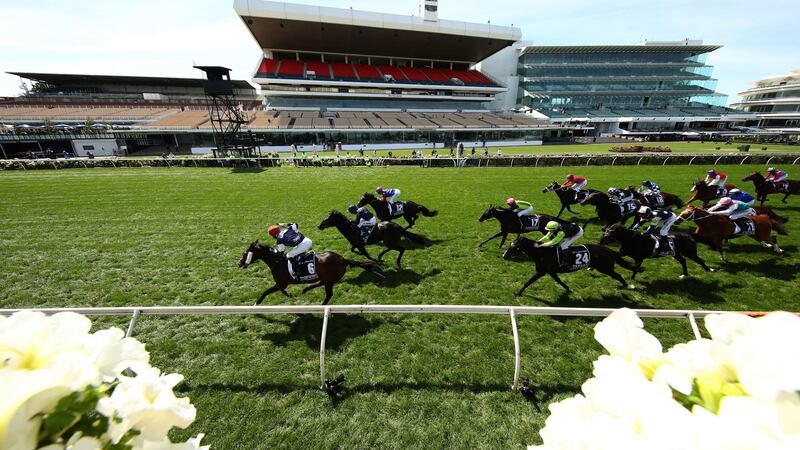
A race unlike any other; except, in its 160th edition, the Melbourne Cup truly was unlike any in its storied history; yet, one that added to the legend of trainer Joseph O'Brien who, at the age of 27, claimed his second victory in the race that, for Australia, traditionally "stops a nation."
The O’Brien clan watched from afar, as Covid-19 quarantine restrictions ensured they stayed at home for a race run in the absence of spectators.
And, not for the first time, be it the Curragh or Epsom or Flemington, it proved to be a family affair down the straight as the Joseph trained Twilight Payment held off father Aidan's trained Tiger Moth. In the joy of the one-two finish, though, there was the flip side of sadness as another of Aidan O'Brien's horses, the top-weighted Epsom Derby winner Anthony Van Dyk, suffered a fatal injury in fracturing a fetlock turning into the home straight.
On board Twilight Payment was young Australian jockey Frey McNeil, riding in his first Melbourne Cup.
The 22nd of 23 runners into the stalls, the race got underway to the sound of a lone roar from an onlooker. The record attendance at Flemington is the 122,736 at the 2003 race while some 81,408 were present in 2019. Not only were spectators not allowed for the 160th staging, but owners too were barred from attending.
Joseph O’Brien laid out his pre-race plans to McNeil from the other side of the globe. “He’s got stamina and a will to win, you can’t buy that,” said O’Brien of the seven year old gelding in mapping out a plan to jump out fast - from stall 12 - and for the 25/1 outsider to lead from the front.
“It was always the plan to be forward. Obviously, with where he was in the market, I wasn’t feeling a lot of pressure but when you have got to go forward like that there is some pressure to get it right . . . I was trying to use my voice to encourage him as much as possible. It was a matter of hanging on and he was very tough,” said McNeil.
US Open
Winged Foot, New York September 20th
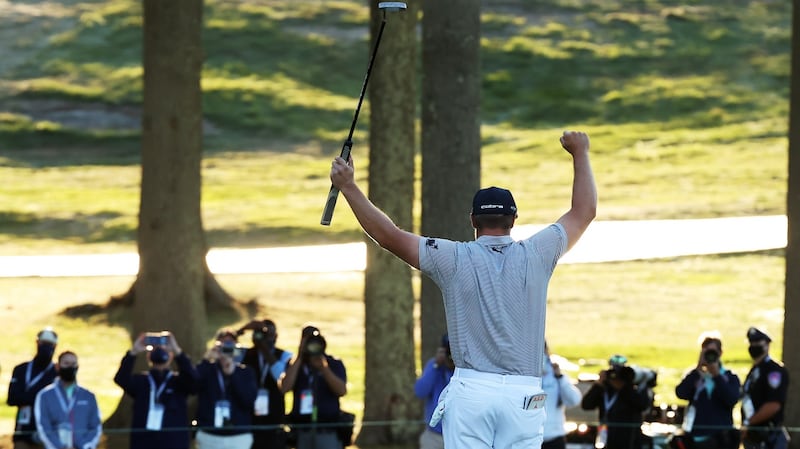
To some, he's the mad scientist. To others, he's just plain B.A.D. - as in Bryston Aldrich DeChambeau - and, for sure, he's one of a kind.
DeChambeau was a man transformed as he left his mark on the year by winning the US Open at Winged Foot, overpowering the fearsome course and outmuscling his rivals. The 27-year-old American shot rounds of 69-68-70-67 for a winning total of six-under par 274, with the runner-up Matthew Wolff cast adrift some six shots behind.
The win was only part of the story, for DeChambeau’s unorthodox route to a breakthrough Major win involved a complete body transformation as he bulked up by adding 18kg (40lbs) to his frame. From being a lanky, skinny kid, the man who added his name to the famed US Open trophy was a muscle bound 109kg (17 stone) who married that physique with an analytical mind, a player who considers everything from air density to trajectory before executing his shots.
DeChambeau has plotted his own course since turning professional, which came after he finished as leading amateur at the 2016 Masters. He uses single-length irons and a straight-armed putting stroke and came into his own - as he predicted - in a US Open performance that was for the most part breathtaking and which, if it were needed, provided validation of his decision to transform into a super-heavyweight.
His power play was everything that went against the traditional way of winning a US Open. DeChambeau only hit 23 fairways through the tournament - including only three in Saturday’s third round and six in the final round - but, left with shorter approaches out of the rough, inveigled a way to run clear of the field and leave all others far behind.
“I don’t really know what to say, because that’s just the complete opposite of what you think a US Open champion does. Look, he’s found a way to do it. Whether that’s good or bad for the game, I don’t know,” remarked Rory McIlroy of DeChambeau’s winning formula.
What we do know is that it is good for B.A.D., a player who does it his way.
Tipperary 0-17 Cork 0-14
Munster Football Final, Pairc Ui Chaoimh, November 22nd
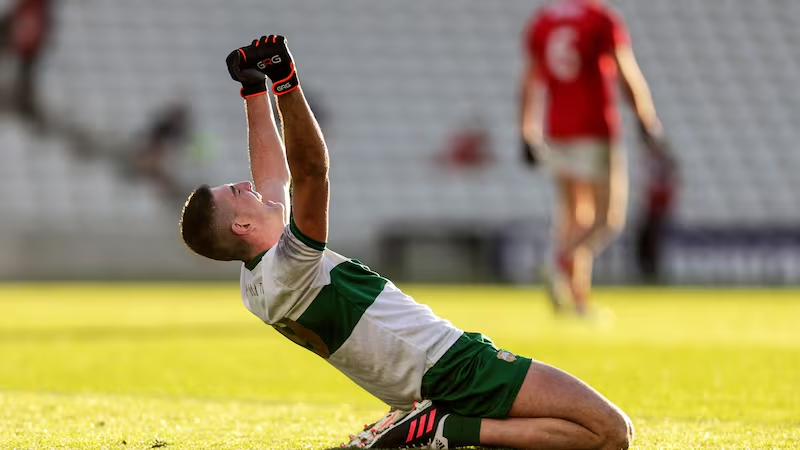
You can take the boy out of the town, you can take him away from town and county, take him out of the country and re-locate half-way around the globe but the truth of the matter is that they never leave.
Colin O’Riordan’s spectacular high fielding late-on in Tipperary’s emotionally charged Munster football final win over Cork was a sight to behold. That he was there at all was a matter of the stars aligning as if fate ordained it that way.
A boy wonder who won an All-Ireland football minor medal as a 15-year-old back in 2011, then a minor hurling medal the year after, O'Riordan's sporting life in recent times has been as a professional player with the Sydney Swans in the Australian Football League.
Given special dispensation by the Swans to remain on in Ireland to play with Tipperary, O'Riordan and his team-mates - 100 years on from the Bloody Sunday atrocity in Croke Park - wore the once-off, green-and-white commemorative jersey for the provincial final and rose to the occasion in Pairc Ui Chaoimh as Tipp won the championship for the first time in 85 years.
Take your pick of special moments of that match. Michael Quinlivan's cheeky grin after an outrageous point. Evan Comerford coolly kicking a long range free. The chaos at the end on Maurice Deegan's final shrill of the whistle.
But when it was all over, it was then that the moment of truth came. It was O’Riordan’s post-game interview, tears never far from his eyes, which encapsulated sport in a nutshell. “A few weeks ago I didn’t think I’d be here and just to be out there with the lads, just giving it all for the sake of Tipperary, I can’t put it into words, it’s the best feeling I’ve had in many years. It just feels me with pride.”
French Open Women’s Singles Final
Roland Garros, Paris, October 4th
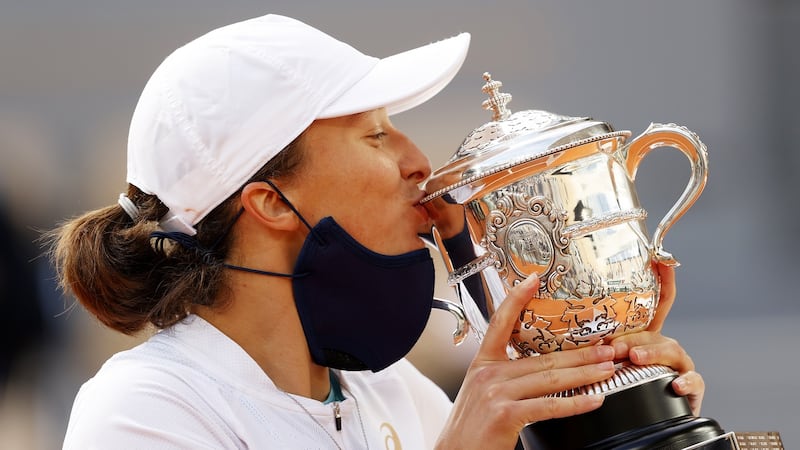
Young and fearless, Polish teenager Iga Swiatek only allowed her emotion to show when it was all over, her comprehensive 6-4 6-1 win over American Sofia Kenin in the French Open women's singles final providing a glimpse of the future.
The 19-year-old, adhering to Covid-19 protocols and wearing a mask as she allowed her words of victory to work through the fabric, said: “It’s crazy, I’m just overwhelmed.”
Swiatek's breakthrough Grand Slam win - the first by a Polish player and the youngest champion at the French Open since Rafa Nadal in 2005 and the youngest woman since Monica Seles in 1992 - was a shock and yet wasn't a shock.
Although ranked 54th in the world heading into Roland Garros, Swiatek’s potential had been identified through her junior career yet the dominant manner of her victory march was one that left onlookers mesmerised and her opponents, one by one, saluting her.
One by one they fell: Swiatek defeated the 2019 runner-up Marketa Vondrousova in the first round to get up and running, and followed up with wins over Hsieh Su-wei and Genie Bouchard before beating top seed Simona Halep in the fourth round. Martina Trevisan, Nadia Podoroska and finally Kenin were all added to the vanquished as she moved ever onwards.
Out on the court at Roland Garros, she was asked about the influence of her father, Tomasz, a former Olympic rower: “He taught me how to be a professional, raised me that way, so I feel pretty confident on court . . . sorry, it’s hard to keep my thoughts together. He gave us everything.”
Swiatek was the one who delivered the goods. Throughout her seven games, she never lost a set and only dropped a total of 28 games. Through it all, she played the role of the silent assassin to perfection. While some opponents screeched on hitting shots, Swiatek executed shots with an eerie quiet and focus.
“You have to go back to someone like Serena (Williams), who likes to hit the ball hard, but can keep the ball in play and defend as well. She plays within herself yet can play very aggressive . . . she is going to win so many more,” observed seven times Grand Slam winner Mats Wilander.
Joe Canning’s Sideline Cuts
Croke Park, Dublin, November 29th
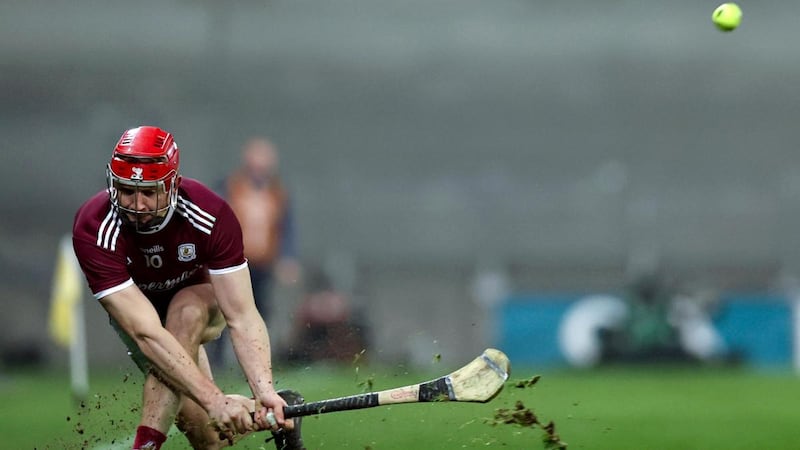
The art of the sideline cut is something to behold, and Joe Canning’s wizardry had a spell-binding effect on the All-Ireland hurling semi-final.
Galway couldn’t stop Limerick’s run to a successful defence of the Liam MacCarthy Cup that day, but Canning’s successful conversion of four sidelines was, in itself, a work of art befitting any tapestry.
While Canning's work that day was shortened, as he left the pitch on a stretcher suffering from concussion after an accidental clash with team-mate Joseph Cooney, his mark was left on the match with no fewer than four sublime sideline cuts which all resulted in points.
The four points from sideline cuts in one match was a championship record - eclipsing the three of Clare's Michael Moroney (in the 1977 Munster championship) and Wexford's Martin Storey (in the 1993 Leinster championship) - and only served to add to Canning's legend as probably the greatest of them all at this particular aspect of hurling.
Canning’s execution of sideline cuts was inspired when watching older brother Davy hit one effort from his own ‘21’ to the opposition’s ‘21’ in a club match.
Of mastering this particular skill, Canning has remarked: “No skill in hurling is something you are born with, you have to work on different things. Practice makes perfect. All the way through (my career) I was trying to practice every skill and I may have practiced the sideline cut that little bit more. It’s like anything, if you want to perfect something, you have to do it repeatedly over time . . . it’s a single-minded thing that you have to do on your own.”
Canning's four points in the All-Ireland semi-final demonstrated his expertise in that department of skill-making but the Galway player had also converted sidelines in each of the previous three matches - against Wexford, Kilkenny and Tipperary - before shooting the lights out in that All-Ireland semi-final defeat to Limerick.
England 328 Ireland 329-3
International Cricket Rose Bowl Cricket Ground, Southampton, August 4th

The first win came before a ball was hit. Ireland's captain Andy Balbirnie won the toss, and put world champions England in to bat. Time flew. With one ball left of the 50 overs, England had been bowled out for 328 . . . and Ireland then knew the target.
And, wearing black armbands in memory of John Hume, a big cricket fan, off they went in pursuit. And what a pursuit it turned out to be.
Balbirnie led by example. Paul Stirling provided an innings for the ages.
Having lost the first two of the Royal London one day international series, Ireland rose to the occasion in spectacular fashion and the only pity of it all was that their heroics - like much of the sporting action of 2020 - was played out in a ghost stadium.
Still, Balbirnie and Stirling combined brilliantly to provide the platform for a remarkable win over the Eoin Morgan-captained world champions.
Balbirnie joined Stirling with Ireland at 50 for one after Gareth Delaney was bowled out by David Willey, and the pair clinically built up a score to make the impossible seem possible. Stirling was the more spectacular, hitting six sixes - including three against English legspinner Adil Rashid - and the partnership put together a stand of 214: Stirling's massive effort was brought to an end in the 42nd over when run out, when on 142; while Balbirnie was caught in the 45th over on 113.
A familiar figure arrived to finish the job.
Kevin O'Brien, at 36 years of age, shared the crease for the final overs with 20-year-old Harry Tector. It all came down to the final over with eight runs required off Saqib Mahmood and, as it happened, there was a little help from the bowler with a waist-high no ball in that final over as O'Brien, unbeaten on 21 runs from 15 balls, hit the winning shot with one ball to spare.
“We’ve beaten the T20 world champions in their own backyards and we’ve beaten the ODI champions . . . it’s a huge win for us and this group, (it) is special and one we’ll remember forever,” said Balbirnie.
European Rowing Championships
Poznan, October 11th

Different place, same outcome. Sanita Puspure’s dominance of the waters was again illustrated in the European Championships, where - yet again - a raised clenched fist, after all the hard work had been done, illustrated her superiority.
In 2019, it had been Lucerne. On a Sunday in October, it was Poznan as the 38-year-old retained her European title in the women’s single sculls. The big difference this time was that Puspure herself was required to place her newest gold medal around her neck.
At the start of the year, Puspure's primary focus was on the Tokyo Olympics. That was taken out of her hands of course by the postponement of the Games; what wasn't taken out of her hands was the opportunity to again showcase her brilliance at the Europeans . . . and she kept her best until the final, where she powered to victory over the 2,000 metres in seven minutes 36.02 seconds, a full boat length ahead of runner-up Magdalena Lobning of Austria.
In near perfect conditions, Puspure was in second place at the 500 metres mark and moved into the lead at the 1,000 metres point before pulling away to finish 2.42 seconds ahead of Lobning with Greek Anneta Kyridou in third.
“I had a solid race plan and wanted to execute it well and leave everything on the course. I just kept pushing on, as I felt quite good. The last 30 strokes I just had to hang in there. It was nice to finish-start the season with a win, delighted with it,” said Puspure, highlighting the unique nature of the season. One championship, one big win.
Tour de France Stage 10
Ile d’Oléron to Ile de Ré September 8th
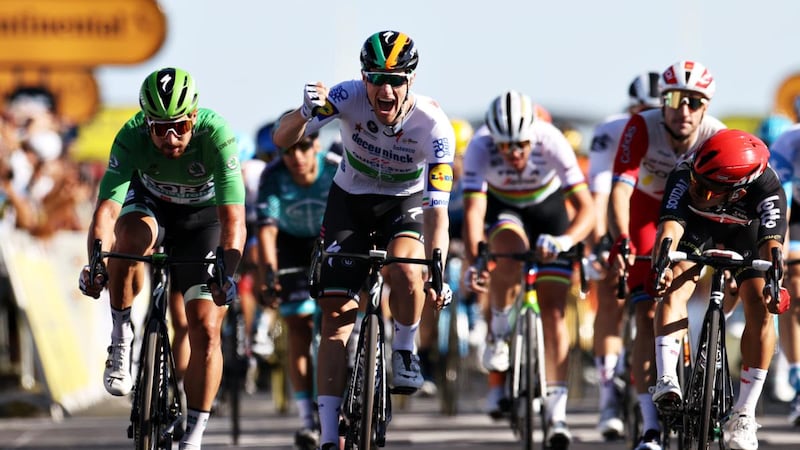
“Did I really win it? It was so close, I don’t trust it . . .”
Sam Bennett’s query back to his Deceuninck-QuickStep team car for confirmation of his first stage win in the Tour de France came first, then came the tears. Pure, unbridled tears of emotion.
Although Bennet’s tour would finish with another stage win on the last day down the Champs Élysées in Paris, this first win - which saw him regain the green jersey and one which he would ultimately claim as his own as points classification winner - was the moment in time.
The 170 kilometre stage took the cyclists through mostly flat terrain and across the 2.9km bridge that connects La Rochelle to the island of Ile de Ré, where the riders were buffeted in the exposed crosswinds, and then it all came down to a quickfire bunch sprint where the three fastest sprinters in the world - Bennett, Peter Sagan and Caleb Ewan - all had their sights set on the finish line.
Bennett - who'd finished second, third and fourth in different stages during the tour's first week - made no mistake, taking a perfect lead in 50 metres from the line from his teammate Michael Morkov. In the madness of the dash for the line, Bennett wasn't sure he had made it over first, believing that maybe one of his rivals had pipped him. He felt maybe he'd been in too high a gear.
“I forgot to throw my bike at the line, in the moment, I thought he (Ewan) might have got me,” recalled Bennett.
Only, he hadn’t; and Bennett’s tyre was the first to cross that line and victory was his, just the sixth Irish rider in the race’s 107 year history to win a stage.
As the man himself put it, “You dream of it, you never think it will happen. Sorry, I don’t mean to be a cry baby!”
Shamrock Rovers 6 Cork City 0
Tallaght Stadium, Dublin February 21st
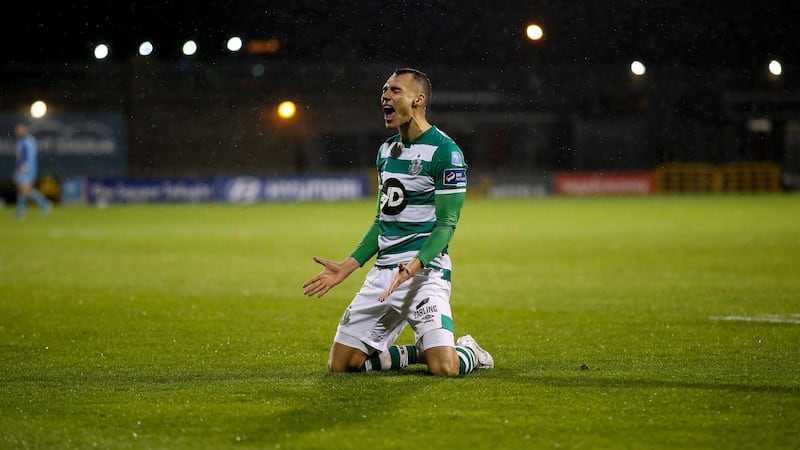
No fewer than 5,106 hearty souls braved the elements for Friday night lights out in Tallaght for a League of Ireland premier division match that provided more than a hint of the fate which awaited Shamrock Rovers and Cork City in a year unlike any other.
In the pandemic disrupted season, one where no fans were around to witness Shamrock Rovers' unbeaten run resulting in the club's first league title in nine years or Cork City's demise and with it relegation back to the second tier, that night provided one of the high points: Graham Burke, on loan to Rovers from Preston North End, stole the show.
Burke, an Irish international, had signed with the English club in 2018 with many observers believing he could progress and even provide an answer to the Irish team's shortcomings when it came to goal-scoring (ironically, Ireland's problems were never more obvious than through 2020 when the national team scored only one goal - Shane Duffy in a 1-1 Nations League draw with Bulgaria - in eight matches. The goal drought since has extended beyond 10 and a half hours of on-field play).
While Irish football fans were starved of goals, Burke provided up a feast of them in that early indicator of Shamrock Rovers' intent as the strike became the first Shamrock Rovers player since Mick Leech back in 1969 to score five goals in a game.
Burke’s left foot proved to be irresistible on the night, as he defied the heavy rain and swirling wind to produce a standout display that saw him rewarded with the match ball. Burke did have a price to pay for his efforts though, as he played on with a calf muscle injury - subsequently revealed to be a tear that kept him out for a number of weeks - in order to complete his goal-scoring heroics as Rovers laid down an early marker en route to lifting the title.




















